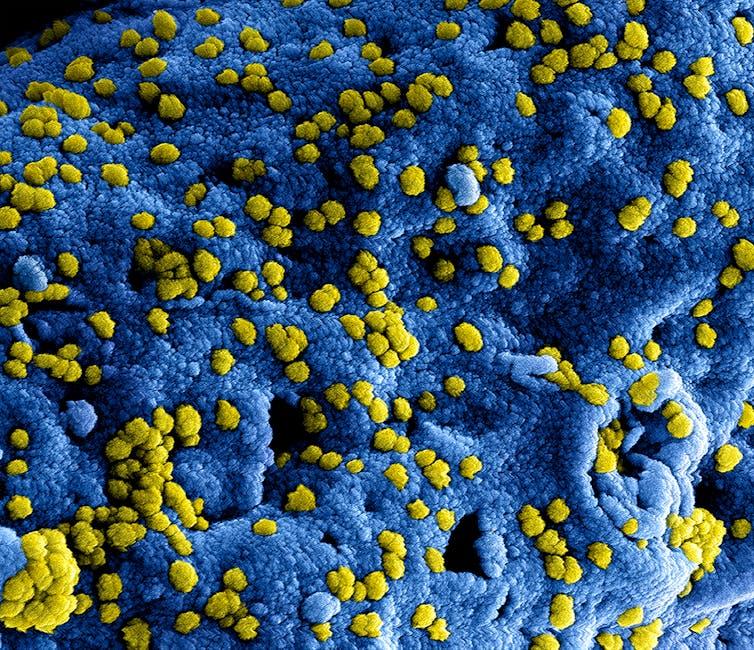
Microbial Contamination Levels in Water Derived From Dental Units Used in Small Animal Dentistry – Frontiers
Water plays a crucial role in dental procedures, especially in the field of small animal dentistry. However, the issue of microbial contamination in water derived from dental units is increasingly gaining attention due to its impact on infection control and animal health. This article dives deep into understanding the microbial contamination levels in dental unit waterlines (DUWLs), their implications in veterinary practices, and practical strategies to ensure safe and hygienic water use for small animal dental treatments.
Understanding Microbial Contamination in Dental Unit Water
Dental Unit Waterlines (DUWLs) are narrow-bore tubing systems that deliver water for cooling and rinsing during dental procedures. Due to their design, these waterlines can become breeding grounds for microorganisms such as bacteria, fungi, and protozoa. Biofilm formation inside these lines is the primary contributor to microbial growth, making water derived from dental units a potential source of infection.
Common Microbial Contaminants Found in DUWLs
- Pseudomonas aeruginosa: Opportunistic pathogen causing wound infections.
- Legionella pneumophila: Can lead to Legionnaires’ disease and Pontiac fever.
- Mycobacterium species: Associated with difficult-to-treat infections.
- Oral Streptococci: Can contaminate water through patient backflow.
- Fungal species: Such as Candida spp., posing risk during immunocompromised states.
Microbial Contamination Levels in Small Animal Dentistry
Studies have demonstrated that microbial contamination levels in water from veterinary dental units often exceed recommended safety thresholds, primarily due to less stringent infection control compared to human dentistry. Small animal oral environments may harbor unique microbial flora, which, when combined with waterborne pathogens, elevates the risk of cross-contamination.
Factors Contributing to Elevated Contamination Levels
- Irregular DUWL flushing and maintenance.
- Use of untreated municipal or tap water without filtration systems.
- Prolonged water stagnation in tubing between procedures.
- Biofilm accumulation due to inadequate disinfection protocols.
| Sample Source | Total Microbial Count (CFU/mL) | Recommended Safety Limit* | Risk Level |
|---|---|---|---|
| Dental Unit Waterline – Small Animal Clinic A | 4,500 | ≤500 | High |
| Tap Water Supply | 250 | ≤500 | Low |
| Treated DUWL Post-Disinfection | 150 | ≤500 | Safe |
*Data based on CDC recommendations for dental water quality (≤500 CFU/mL)
Health Implications of Contaminated Dental Unit Water in Small Animals
Microbial contamination in water used during dental treatments may cause several health risks, including:
- Post-dental procedure infections: Opportunistic pathogens introduced via contaminated water can cause localized infections in the oral cavity or systemic infections.
- Immunocompromised animal risks: Older or immunosuppressed pets are more vulnerable to waterborne infections.
- Cross-contamination between animals or between veterinary staff and patients.
Benefits of Maintaining Low Microbial Levels in Dental Unit Water
Ensuring that water used in small animal dentistry has low microbial contamination offers numerous advantages:
- Improved patient safety: Reduces the risk of infections and complications.
- Compliance with regulatory standards for veterinary infection control.
- Enhanced clinic reputation by ensuring high standards of hygiene.
- Protection for veterinary staff from zoonotic infections.
Practical Tips for Reducing Microbial Contamination in Small Animal Dental Units
Veterinary clinics can adopt several strategies to minimize water contamination:
- Regular flushing: Flush waterlines for 2–3 minutes at the start and end of each day.
- Use of sterile or filtered water: Incorporate inline filters or sterile water bottles for dental units.
- Disinfection protocols: Apply chemical disinfectants such as chlorine dioxide or hydrogen peroxide-based solutions regularly.
- Routine monitoring: Conduct microbial testing of DUWL water samples quarterly.
- Replace old or worn tubing: Periodic replacement of waterlines to reduce biofilm buildup.
- Staff training: Educate veterinary staff about the importance of DUWL maintenance and hygiene practices.
Case Study: Successful Biofilm Control in a Veterinary Clinic
At VetSmile Animal Dental Clinic, the implementation of a comprehensive waterline disinfection protocol resulted in a dramatic reduction in microbial contamination levels. Before intervention, microbial counts averaged 3,800 CFU/mL, exceeding safety limits and occasionally causing post-procedure oral infections in patients. Through these steps, contamination levels consistently stayed below 200 CFU/mL:
- Daily flushing and weekly chemical disinfectant treatments.
- Installation of sterile water bottle systems.
- Quarterly laboratory testing of water samples.
- Staff education seminars on infection control.
This case underscores that targeted interventions can maintain optimal water quality standards, enhancing patient outcomes and clinic safety.
Conclusion
Microbial contamination in water derived from dental units remains a critical challenge in small animal dentistry due to biofilm formation and inadequate waterline maintenance. Given the risk of infection and cross-contamination, veterinary clinics must prioritize rigorous infection control protocols to ensure the water quality meets established safety standards. Regular monitoring, disinfection, and use of sterile water sources can dramatically reduce microbial contamination levels, safeguarding both pets and veterinary staff.
By adopting best practices tailored for small animal dental units, clinics can reliably minimize waterborne pathogens, improve veterinary care quality, and build trust in their services. Understanding and addressing microbial contamination in DUWLs is an essential frontier in advancing safe and effective small animal dentistry.


